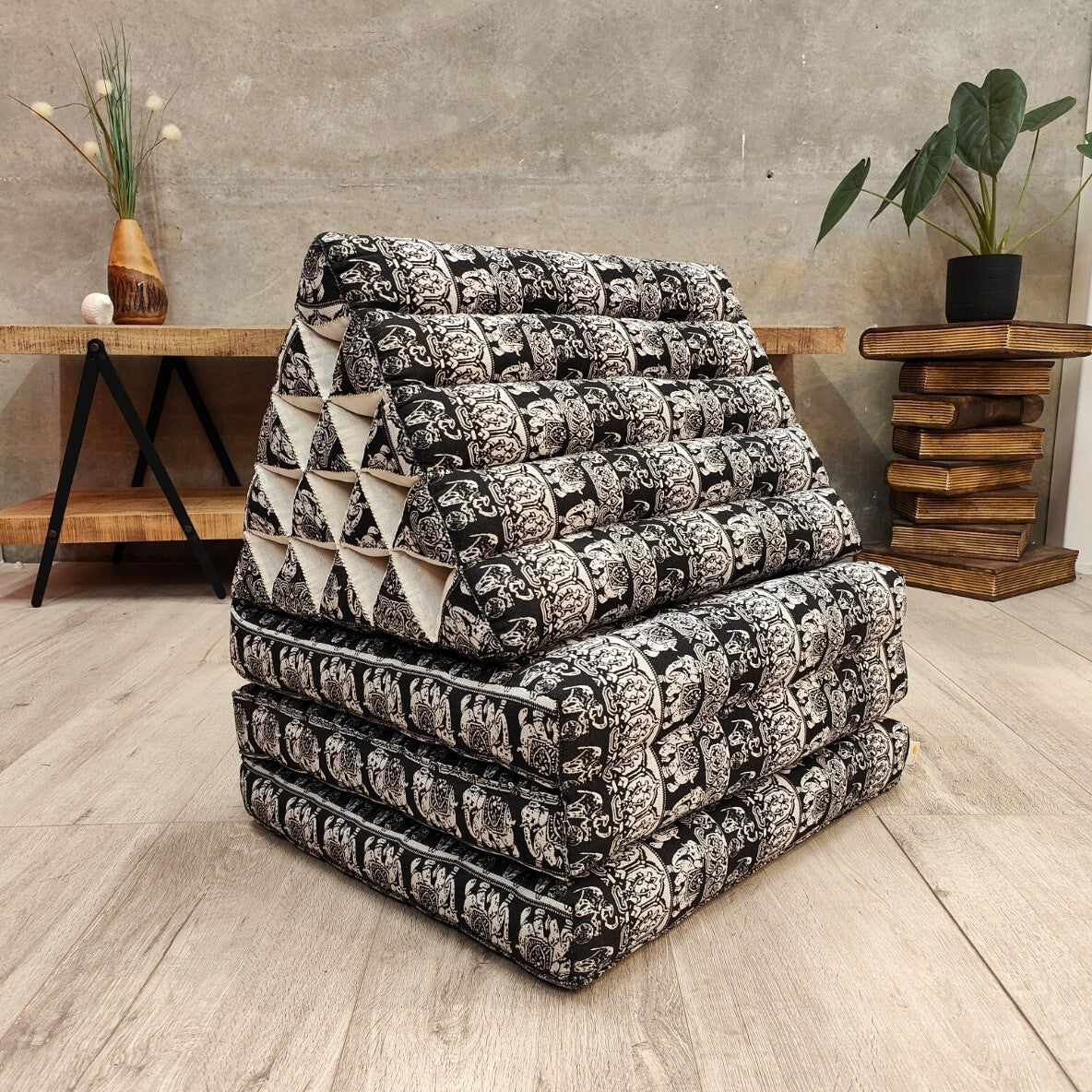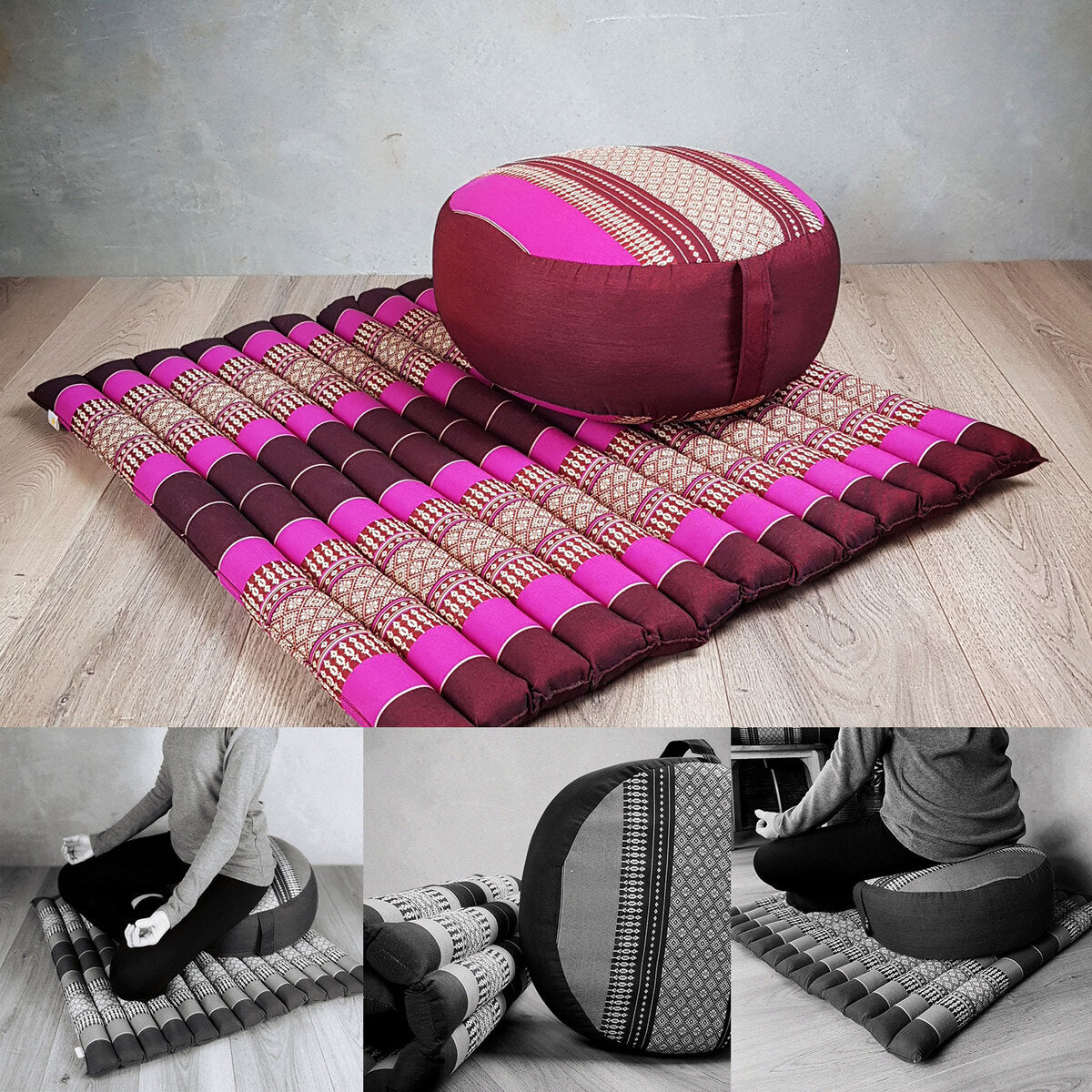Meditation Mats
Create a sacred space for your meditation practice with our handcrafted organic meditation mats. Designed to provide optimal comfort and support, these mats offer a soft and serene surface to deepen your mindfulness and relaxation.
Meditation Mats



Meditation is a powerful tool for cultivating inner peace, reducing stress, and improving overall well-being. It involves training the mind to focus and direct attention, allowing you to achieve a state of mental clarity and tranquillity.
By following these steps and practicing regularly, you can begin to experience the many benefits of meditation. Remember, the goal is not to achieve a completely still mind, but to develop the ability to observe your thoughts and feelings without judgment.
A meditation mat provides a comfortable and supportive surface for your practice, allowing you to focus on your inner state without physical distractions. Several options are available, each with its own benefits. Traditional zafus and zabutons are popular choices, often used together. A zafu is a round or crescent-shaped cushion that elevates the hips, promoting proper spinal alignment for seated meditation. A zabuton is a larger, rectangular mat placed beneath the zafu, often bought as a meditation cushion set, to cushion the knees, ankles, and feet, providing extra comfort and insulation from the floor.
Beyond traditional cushions, yoga mats or specialised meditation mats can also be used. Yoga mats offer a non-slip surface and varying degrees of cushioning, making them suitable for seated and kneeling postures. Meditation mats are often thicker and more cushioned than yoga mats, providing enhanced comfort for longer meditation sessions. The best choice depends on personal preference, the type of meditation practiced, and individual needs for comfort and support. Ultimately, the right mat is the one that allows you to maintain a comfortable posture and minimise distractions during your practice.
While not strictly required, a mat can significantly enhance your meditation practice. The primary purpose of a meditation mat is to provide comfort and support, minimising physical distractions that can arise from sitting on a hard floor. A mat cushions your knees, ankles, and feet, allowing you to maintain a comfortable posture for longer periods. This is especially beneficial for beginners who may not be accustomed to sitting for extended meditation sessions.
Beyond physical comfort, a mat can also help define your meditation space, creating a dedicated area for your practice. This can help signal to your mind and body that it's time to enter a state of focus and relaxation. Whether it's a traditional zabuton, a yoga mat, or a simple blanket, using a mat can contribute to a more grounded and comfortable meditation experience, allowing you to deepen your practice and cultivate inner peace.
Meditation mats are often referred to by a few different names, depending on their style and origin. The most common term is simply "meditation mat." However, you might also hear them called:
Yoga mats can be used for meditation, but they aren't always the ideal choice. While they provide a non-slip surface and some cushioning, they are primarily designed for dynamic yoga postures. This means they are often thinner and less cushioned than dedicated meditation mats. For shorter meditations or seated postures where minimal cushioning is needed, a yoga mat can suffice.
However, for longer meditation sessions, especially those involving kneeling or cross-legged sitting, a thicker, more supportive surface is generally recommended. Dedicated meditation mats, such as zabutons, offer significantly more cushioning for the knees, ankles, and feet, allowing for greater comfort and reducing the risk of discomfort or numbness. Therefore, while a yoga mat can be a temporary solution or suitable for certain types of meditation, a dedicated meditation mat is often a better investment for a more comfortable and sustained practice.
